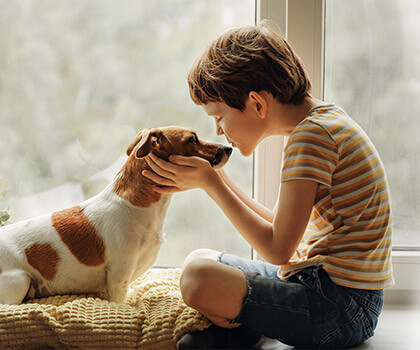Getting a New Dog Soon? Here are Four Things You Need to Know
The United States is truly a nation of dog lovers — nearly 90 million dogs lived in American homes as pets in 2017, up from 68 million in 2000. Are you thinking of joining these ranks? If so, congratulations! Your life is about to change for the better. However, to make sure Fifi is happy in her new home, you need to do a little preparation work first.
Pick the Right Breed for You
Although some dog breeds were bred for their appearance, many were bred with a specific purpose in mind. Knowing this purpose will help you choose a breed, because you can decide if their temperament will fit in with your lifestyle. For example, bullmastiffs were bred to guard and although loyal, can be territorial. Collies were bred to herd, and so they are obedient and have a gentle temperament, making them good family dogs. Spaniels were bred for bird hunting, and so need a lot of exercise and ideally a large yard.
If you’re someone going through addiction recovery, choosing a dog that enjoys the outdoors is especially important, as it allows you to go outside, get some fresh air, and hit the trails, which is good for both the body and soul. If you have a disability that prevents you from going outside, however, choosing a pup that enjoys curling up with you is a great idea.
Make Sure Your Home Is Dog-Safe
Some dogs will settle into a new home and behave well right off the bat. Others will chew up your whole house. Since you won’t know which type you’re going to get, dog-proof your home as much as possible. Tape your electrical wires to baseboards to prevent your new dog from chewing into them, and hide away all items that they might choke on. Also, unless you enjoy cleaning garbage, vomit and diarrhea from your carpets, get a dog-proof trash can — a foot pedal model that requires a fair bit of force to open will do the trick.
Get Your Gear
Before you bring your new furry friend home, there are a few things you’ll need to buy. Make sure you have a collar with an ID tag, a leash, a large dog bed, dog food (start by getting the same brand as they ate at the store to avoid gastric problems), food and water bowls, grooming equipment and toys. If you don’t have a suitable space to let Fifi roam in when you’re not home, you might also want to buy an exercise pen. As well as these essentials, check what vaccinations your dog has already received and find a local vet to administer any others she needs.
What to Do on Moving Day
According to the Dog Whisperer Cesar Millan, moving day is an important opportunity to demonstrate your leadership to your new dog. When you get home, first take her for a walk, which will help burn off excess energy. Then allow her into the house, but only after you have entered first, and invited her to follow. Keep her on the leash as you give her the guided tour, with her at your side rather than wandering around. At each doorway, again walk through yourself first before inviting her to follow.
After the tour, give her some food and show her to her bed. She might want to play, or she might just want to sit and observe for a while — if so, that’s fine, just ignore her and go about your day — she will approach when she’s ready.
Enjoy Life With Your New Family Member
It might take a little extra effort and expense, but this preparation will be worth it. If you do some research into the breed that would suit you best, get your home in order, and buy everything you need ahead of time, you’re well on your way to owning a happy pup. It’s all wags and walks from there!














